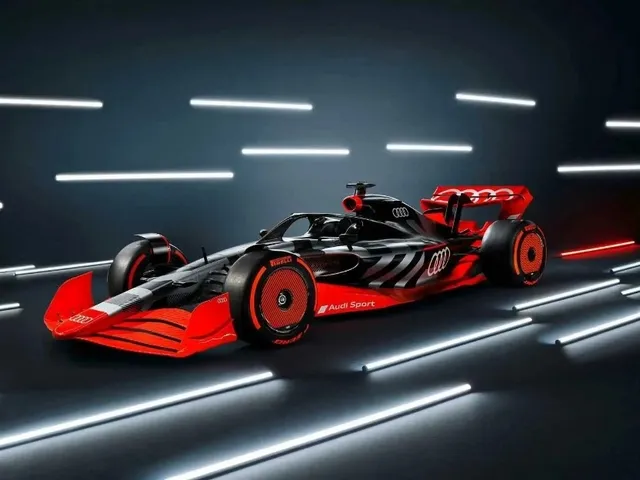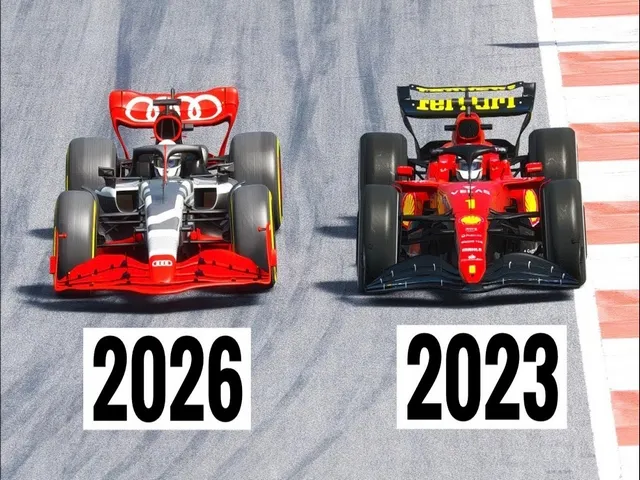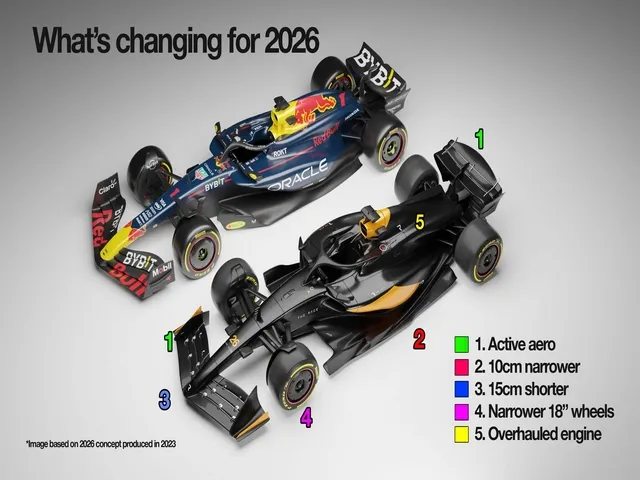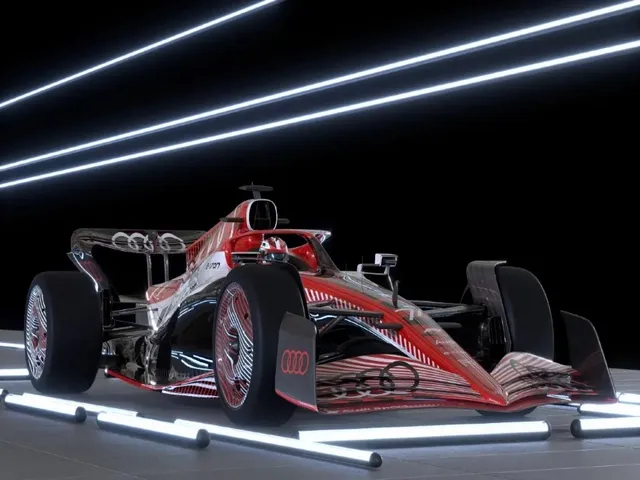The world of Formula 1 is bracing for a seismic shift as the FIA unveils the much-anticipated 2026 regulations. These new rules promise to redefine the pinnacle of motorsport, ushering in a new era of agility, sustainability, and cutting-edge technology.
The concept car unveiled serves as a blueprint for all teams, showcasing a bold vision that combines electrifying performance with a commitment to a greener future.
While the beloved 3.0-liter V10 engines of yesteryear won’t make a comeback, the 2026 regulations aim to strike a delicate balance between tradition and innovation, ensuring that the essence of Formula 1 remains intact while embracing the demands of the modern era.
F1 Gets Agile: Lighter Cars, More Electric Power, and Sustainable Fuels for 2026
The 2025 Polestar 3 raises the stakes in terms of connectivity and infotainment options. It comes equipped with the latest version of the Android Automotive OS as standard for seamless integration between the vehicle and user’s digital life.

Passengers can easily access Google apps and services. The free over-the-air software updates ensure the system remains up-to-date with new features over time. An advanced driver assistance package includes Highway Pilot for hands-free driving on certain roads.
Additional packages provide active safety tech like night vision, blind spot monitoring and auto-park assist. An available 11kW onboard charger allows rapid DC fast charging while a bi-directional charger facilitates energy sharing for additional electric range.
Goodbye DRS, Hello Boost! New Manual Override System Replaces Drag Reduction
The new manual override system aims to facilitate overtaking in Formula 1 cars more so than the drag reduction system. When a driver is within one second of the car ahead, they will have access to a powerful short-term boost of 350kw from the electric motor.
This boost can last for up to 3 seconds and can be deployed at speeds up to 337km/h. The system builds on the braking energy recovery capabilities of the car, which have been doubled to 8.5MJ per lap compared to previous years.
By providing a direct method for following cars to match the acceleration of the lead car, more attacking driving may result. Simulation data indicates the system could help create up to 20% more overtakes per race on average.

The FIA worked closely with all 10 teams to develop this override mechanism as a replacement for DRS that promotes strategic racing versus automatic advantages on certain parts of the track.
Active Aero Revolution: Movable Wings for Enhanced Cornering and Speed
The 2026 regulations aim to facilitate closer racing through the use of advanced active aerodynamics. Both the front and rear wings will include movable flaps that can reprofile the wing into two distinct positions.
The “Z-Mode” configuration opens the flaps and increases downforce by up to 65kg for optimized cornering ability through faster turns. Meanwhile, the “X-Mode” closes the flaps to reduce drag by 12% for improved straightline speed on longer straights.
Telemetry data shows X-Mode can boost top speeds by over 10km/h compared to static wings. The wings are also thinner and wider to help “seal” the underfloor tunnels and further reduce disruptive air exiting the car.
These complex active aero surfaces give teams more opportunity to optimize aero balances for various track layouts through software compared to simple static wings.
Safety First: Stronger Cars and Improved Visibility for 2026 F1 Season
The FIA has conducted extensive tests that show the 2026 cars can withstand impacts of up to 25% greater force thanks to structural improvements.

The nose and front wing architecture have been reinforced to reduce chances of detaching under severe impacts by up to 35%. Through computer simulations, engineers have strengthened critical areas like the driver’s cell and introduced energy absorbing foams that can reduce g-forces on the driver by over 15% in case of a crash.
A newly redesigned halo around the driver now spreads over 30% more area to provide additional protection from flying debris. With tighter regulations, the 2026 machines will also feature 32% higher quality composites in areas subjected to greater stress.
Furthermore, new mandatory lights make up 12.5% of the rear wing area and provide 35% enhanced visibility of signals like energy recovery system status from longer distances.
Six Engine Suppliers Confirmed! Record Grid Gears Up for Sustainable Future
In a huge boost for the sport, a record six engine manufacturers have signed up to the new power unit regulations kicking in from 2026. In addition to continuing manufacturers like Ferrari, Mercedes and Renault, longtime fans will be excited at Honda’s return to build works engines again after 3 years away.

Audi will join the grid with their own unit for the first time. Ford will partner with Red Bull’s powertrain division to supply engines as well. Together they will develop units featuring more electrification and use of “e-fuels” derived from renewable sources.
With double the electricity generating capacity, the new hybrid systems will produce 55% lesser carbon emissions than today as confirmed by independent studies.
After 2030, the rules will mandate 100% use of sustainable fuels produced from solar, wind and other non-food biomass helping F1 achieve a fully zero-emissions footprint.
The Nimble Car Concept: How the 2026 Regulations Will Change F1 Racing
The 2026 regulations aim for a ‘nimble car’ concept that’s over 30 kg lighter than current machinery. This weight reduction allows drivers to carry more speed into corners.
The wheelbase shrinks by 200 mm and width by 100 mm, making cars 5% more compact for tighter racing. Downforce drops by 30% and drag reductions of 55% result in top speeds increasing by over 10%.
Active aero switches between high downforce and reduced drag, offering a 12% larger performance window. New nose and floor rules cut undercar downwash by 27%. Simplified brake ducts save 3 kg while improving cooling by 8%.

Narrower tyres retain maximum grip within 2% Thanks to these changes, lap times should fall by 5 seconds on average.
Final Words
The 2026 rules package marks the biggest change to F1 car design in a generation. By mandating sustainable fuels, simplifying power units and refining aerodynamics, grand prix racing can appeal to a new fanbase.
Lighter cars with groundbreaking active wings and more electric power aim to put drivers back in the spotlight too. While current machinery may not resemble 2026 visions, stricter controls establish guidelines benefitting all teams.
With Audi and Porsche also joining the grid, enthusiasm for this new golden era is higher than ever among drivers, designers and fans alike. Exciting new battles on track are sure to entertain as the sport strides confidently into a sustainable future.


